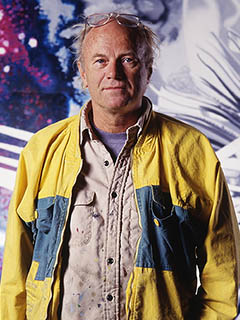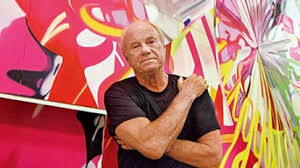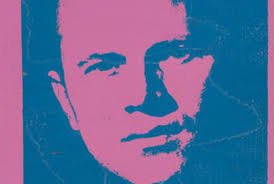
1933 - 2017
James Rosenquist

description
James Rosenquist was an American artist, the central figure of pop art, famous for his huge collage paintings depicting popular objects of American culture. He was one of the first to include advertising images in his works. Consumer goods, well-known personalities and trademarks were permanent attributes of the artist’s painting – he boldly combined all of them in his works of impressive size and bright colours.
In his youth, James Rosenquist worked at an advertising agency and created the design of large billboards, which helped him develop his original style and recognizable style. For a modern viewer used to the fact that anything can be on the picture, it is not surprising that the canvas shows spaghetti in sauce or a bottle of Coca-Cola next to the portrait of the president. However, for the society of the 1960s, this was a real discovery and even a shock; therefore, the artist’s works attracted the close attention of the public. One of them, called “F-111”, became truly iconic, “new Guernica”, which very accurately depicted American reality with growing consumer demand and frightening military power.
The art of James Rosenquist was popular almost from the very beginning of his career. Using his influence, he stood up to protect his colleagues and helped achieve recognition of the rights of artists at the federal level, after which he was appointed to the National Council for the Arts of the United States. For six decades, Rosenquist created large-scale provocative paintings that rose economic, political, environmental and scientific problems, the relevance of which did not decline over time.
Key ideas:
– Paintings by James Rosenquist are a combination of entirely different, unrelated objects. Taken out of context, they are layered and collide with each other in conditional space. The artist did not invent the objects depicted in the paintings, but took them from reality. He used ready-made images that everyone could see every day in advertising or television programs, and changed them, adding new, unexpected details. In fact, the depicted objects were already completed things, which the artist combined and placed on the plane of the canvas at his discretion.
– The decisive role in the formation of the style of Rosenquist was played by the years of his work as an artist who designed billboards. The artist’s paintings are not only large but are also distinguished by a peculiar manner of the use of clear contours, vibrant, saturated colours, understandable and instantly recognizable objects. His style resembles advertising; it has no claim to the individuality of the author, and the external attractiveness of the image, which was created in such a way that a consumer paid attention to a particular product, is of primary importance.
– There is no perspective in the artist’s paintings, and the objects have different sizes. Some of them are placed farther from the viewer, while others occupy the foreground, increasing so much that it is difficult for the standing viewer to determine what exactly is depicted there. In addition, the objects have different features. Some of them are almost completely plain, while others have a more realistic three-dimensional appearance due to the used chiaroscuro. This technique makes Rosenquist’s works look like real collages, the material for which was taken from various newspapers and magazines.
– The theme of the works of James Rosenquist gradually changed throughout his career. At first, the artist used elements of advertising and simple household items, which he made look enormous and originally connected. His later compositions are characterized by his interest in science and philosophical conclusions. Some paintings have, among other things, political implications, protesting against the production of weapons, the outbreak of war and environmental pollution.
1933
1952
1955
1960
1962
1965
1971
1972
1974
1976
1992
2009
2017
James Rosenquist was born into a family of immigrants from Sweden
Entered the University of Minnesota

He entered the Art Students League

From abstraction to a special form of neo-realism

The first solo exhibition of Rosenquist

«F-11»

He moved to South Florida

The retrospective exhibition

The artist’s paintings of that period began to contain more political themes

He rented a studio in Aripek in Florida

“Dust of Time”

On April 25, a severe fire occurred in the house and studio of the artist in Florida

The death of the artist

